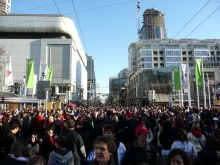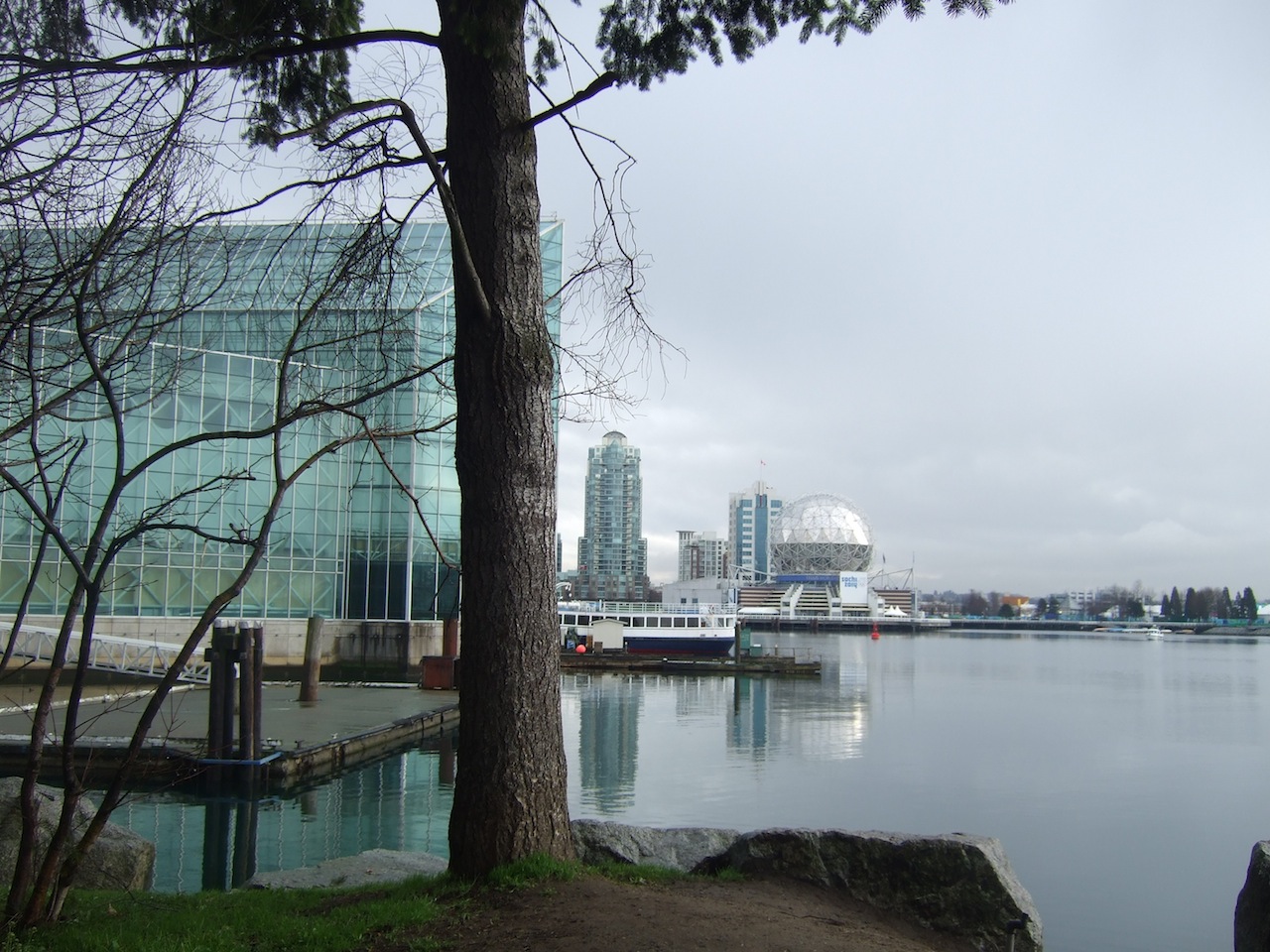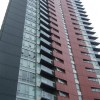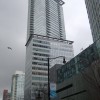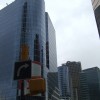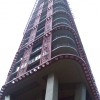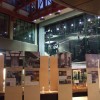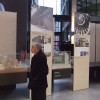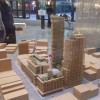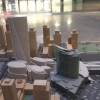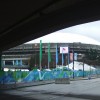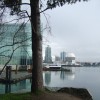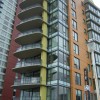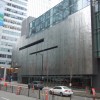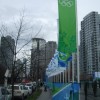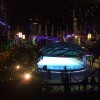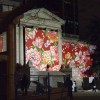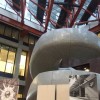The Olympics: Vancouver Sets The Green Stage
Video
alt=""Our trip to Vancouver was intensely successful. However, as I subtly suspected, the content we ended up with was not exactly the type of content we had initially intended to gather.
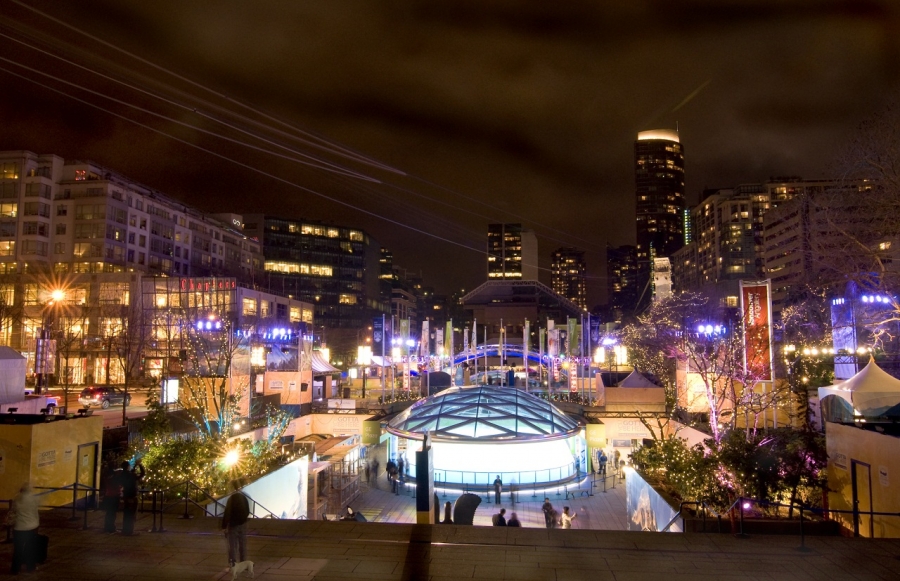 Robson Square | Credit: Damian Wohrer
Robson Square | Credit: Damian Wohrer
First of all, we were privileged to have a personal tour of the city with the architectural critic, curator, and consultant Trevor Boddy. The School of Architecture at The University of British Columbia recommended we meet with him as our first contact in the city. Boddy, who himself has been a contributor to the international architectural criticism arena, provided us with a context of the city in a way that helped us understand that Vancouver's methods of urban planning are not only superbly successful, but also sustainable. After his tour, we were back to square one in the debate over whether a sustainable environment is really about the building or about the way a city is organized.
Walking Tour with Trevor Boddy
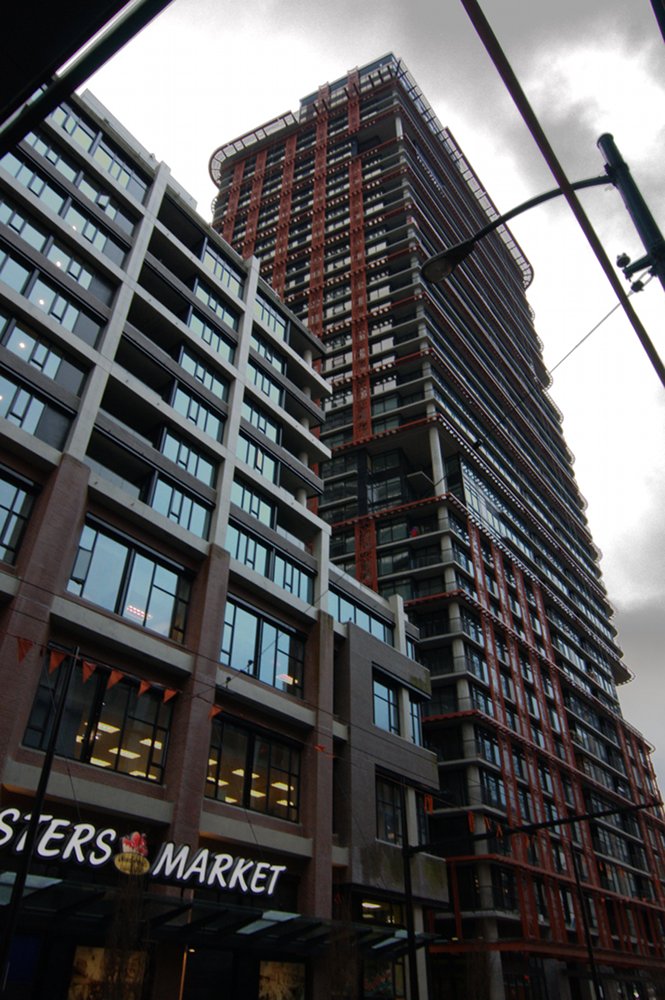 As part of our tour with Boddy, we walked into the Woodward's Building, which was designed by Henriquez Partners Architects and is located in the middle of a drug-stricken area at the 100 block of West Hastings. To combat the drug problems, the city has decided to encourage positive growth in the area with posh retail and restaurants. Now, going a step further, they have introduced this residential building that will house a variety of social classes, as well as art classrooms. "The wealthy who will live in this tower will be able to look out their window across this courtyard into the windows of socially-troubled people who are housed over in the adjacent tower," says Boddy. Will this architectural design practically save this area of the city? Most likely.
As part of our tour with Boddy, we walked into the Woodward's Building, which was designed by Henriquez Partners Architects and is located in the middle of a drug-stricken area at the 100 block of West Hastings. To combat the drug problems, the city has decided to encourage positive growth in the area with posh retail and restaurants. Now, going a step further, they have introduced this residential building that will house a variety of social classes, as well as art classrooms. "The wealthy who will live in this tower will be able to look out their window across this courtyard into the windows of socially-troubled people who are housed over in the adjacent tower," says Boddy. Will this architectural design practically save this area of the city? Most likely.
"Take a Hong Konger and cross him with a New Yorker and you get a Vancouverite." Trevor Boddy, Architectural Critic
Architects and city planners alike are a part of the rejuvenation efforts blooming all over the city. On our tour, we ran into Gordon Price riding his bike past the Woodward's building. "If you want to be a city councillor here in Vancouver, you practically have to be seen on a regular basis riding your bike," says Boddy as Price approached our group. This is just one more manifestation of the city's sustainability. Public transportation, walking, and riding bicycles are greatly encouraged and work quite well for the residents.
Olympic Spotlight
2010 Olympics Begin: Vancouver Convention Center
Vancouver Gathers At Robson Sq
A Remarkable Torch Starts the Olympics Opening Ceremony
Vancouver City Councilor Suzanne Anton on Eco-Density
Price served as a Councillor for the City of Vancouver for six terms from 1986 to 2002 and has been working on urban development and planning through teaching, writing, lecturing, consulting, and maintaining his website called Price Tags. Price is currently the Director of the City Program at Simon Fraser University.
In an effort to educate the world at large about how Vancouver has achieved sustainable urban planning success, Boddy curated a sensational architectural exhibition called Vancouverism: Architecture Builds the City. The exhibition has already toured in both London and Paris. We hope to see the exhibition in other locations as well because it does such a good job of describing how Vancouver has been a successful city planning model. One of the best parts about having the Vancouverism exhibition located inside the Woodward's building is the fact that the exhibit shows us how the Woodward's building itself will be successful. Boddy has proven through his research that other buildings in Vancouver which were designed with similar principles have excelled at gathering together people of varying social classes. These are spaces in which everyone is quite happy to be "together," helping each other out through life's struggles.
A Few Keys To Vancouver's Success
Developers are required to make large civic donations in order to get their high rises built. For example, a developer may create a public space or two in the city to serve as play areas and park lands. Or, the developer may sponsor the development of a large retail store to support the people that will then occupy their high rise. Sometimes, the developer will sponsor daycares and community centers that are close to their buildings. Essentially, the larger the building, the larger their sponsored project must be.
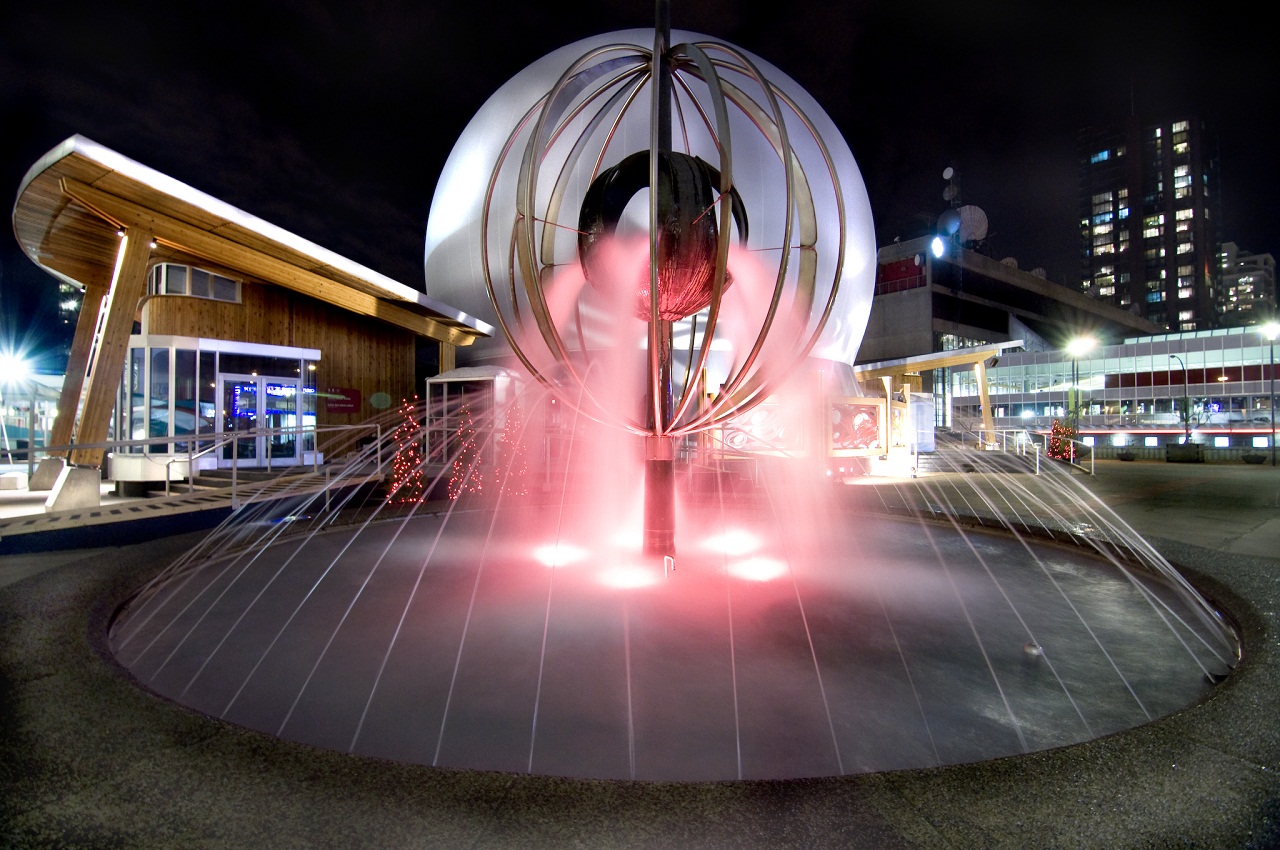
People along a wide range of the social scale live next to each other. Just as in the Woodward's building, there are high rises throughout the city that have a range of public funded apartments right next to privately funded apartments. Reportedly, this social housing structure works very nicely and, through friendships, people end up helping each other out.
We cannot ignore the fact that since 1986, all parking for new construction is built underground. While parking along the streets is still prevalent, the valuable city land is not burdened with parking lots. As such, the fabric of the city is threaded together nicely based on what we would call a pedestrian's environment. Even cars parked along the street are more pedestrian friendly than large concrete lots filled with vehicles.
"We have a strange sort of city problem that is the reverse of what you often see in American cities. A high percentage of our residents are actually leaving the center of the city to get to work." Trevor Boddy, Architectural Critic
The "pedestal and tower" architectural prototype originally designed by Arthur Erickson is yet another key element to the city's design. The pedestal refers to a townhouse structure that lines the streetscape and forms a type of platform, and a residential tower soars from its center. The townhouses very much resemble New York City's brownstones, only they lack the signature brownstone material and are not quite as large in scale as those in NYC. Nonetheless, these townhouses are critical to the city's success because they are buildings created with a sensitivity to the human scale. Architecture at the human scale is most certainly important for creating a successful pedestrian city. Going one step further, I propose that the luxurious townhouses may even represent themselves as the ambassadors to the residential skyscraper. They warmly welcome visitors and give tower residents a sense of prestige as they walk by to their tower's entrance.
Of this architectural style, Boddy says, "Take a Hong Konger and cross him with a New Yorker and you get a Vancouverite." Of course, he is referring to the tower as the Hong Kong prototype and the townhouses as the New Yorkers. The elegance of the tall thin towers are also accredited to the ancient eastern philosophy of Feng Shui, brought to Vancouver by Hong Kong immigrants. According to Feng Shui, it is good for each residence to have views to the outside and even better for those views to be directed toward the water and mountains. "So we end up with tall thin towers that are reminiscent of the towering trees that once prevailed in our landscape," says Boddy as he illustrated this description by pointing to all the towers that surrounded us while standing right in the middle of the city proper.
Bing Thom told us, as we interviewed him in front of the examples of his architecture at the Vancouverism exhibit, that Vancouver has a high influx of immigrants coming from countries with high density ratios in their cities. Residential towers are becoming so popular in Vancouver, in fact, that people are having a hard time finding space for offices, primarily because residences provide a higher profit for developers than do office spaces. "We have a strange sort of city problem that is the reverse of what you often see in American cities," says Boddy, "A high percentage of our residents are actually leaving the center of the city to get to work."One of the things I love about Vancouver is the influx of immigrants that make the fabric of the city so vibrant. They come to the city and start to become integrated into the population, through the community centers at first and then, once they make a few key relationships, they are immediately ushered into a large, close-knit community where truly, "everyone knows everyone." In fact, of the seven people with whom we conducted a video interview, they all knew each other. Furthermore, in the group of seven, each of them stood at one end or the other of the political spectrum. It didn't really matter to them; they saw someone of a differing political attitude as being an asset to the city. They realized that people of other opinions can help us to form our own opinions, and in the end we can all balance each other out. We all win in the end that way.
Bing Thom Architects: Surrey City Centre & Sunset Community Center
While standing at the Vancouverism Exhibition in the Woodward's, we ran into Bing Thom, the founder of Bing Thom Architects. A few of his buildings are presented in the exhibition, along with a couple of scale models and a life-size model of an engineered wood column found within the Surrey City Centre building. These columns have become well-known and are one of the signature pieces of the Surrey City Centre project. We had a most gracious tour of two of Bing Thom's architectural projects presented in the Vancouverism exhibition, and we will have further coverage, both with articles and videos, of these two projects in the coming weeks.
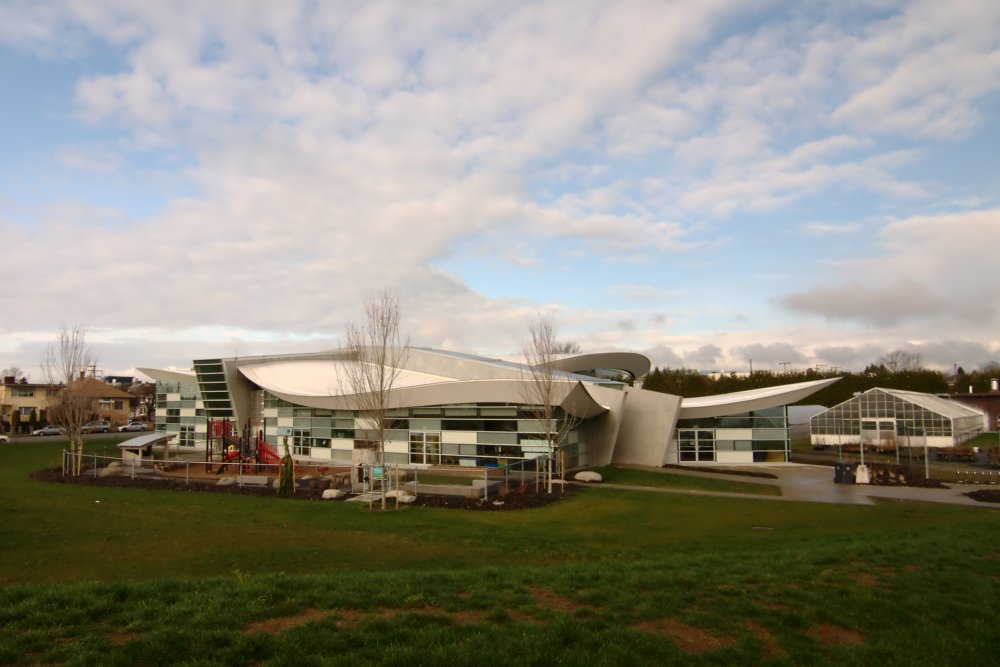
At The 2010 Winter Olympic Games
Visit the Vancouverism: Architecture Builds the City exhibition in the Woodward's Atrium. Contact Trevor Boddy to set up a private tour; proceeds go toward future exhibition projects. Maybe you will also run into some of the architects and city planners that have been so crucial to the development of Vancouver's city planning. By the way, other cities, such as Portland, OR, have tried to adopt the Vancouverism model, yet none have been able to replicate its success.

Stephanie Aurora Lewis
Stephanie, an NCARB registered architect and LEED AP, draws upon her studies in architectural history and theory from Sarah Lawrence College and her master’s degree in architecture from The Ohio State University. Providing copy for publications and performing marketing work for the construction industry, Stephanie works as an independent freelancer from Columbus, Ohio.
Website: greengaloredesigner.blogspot.com/

